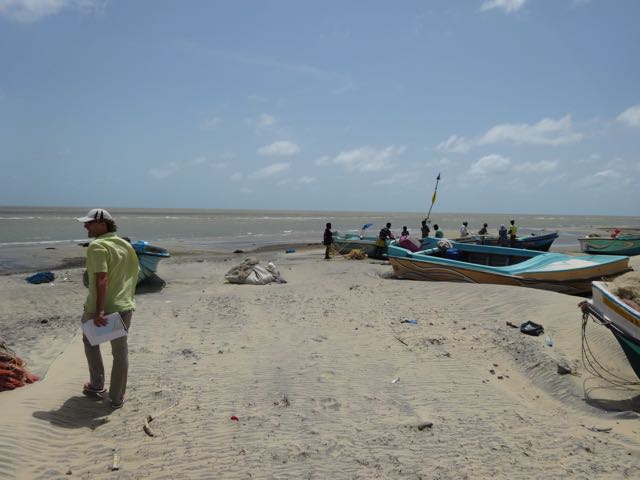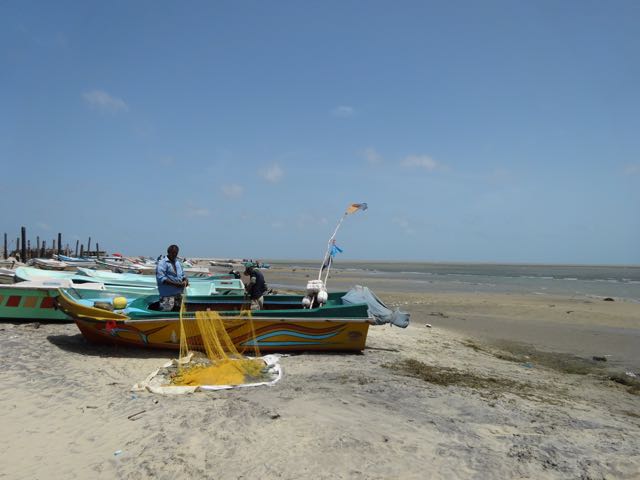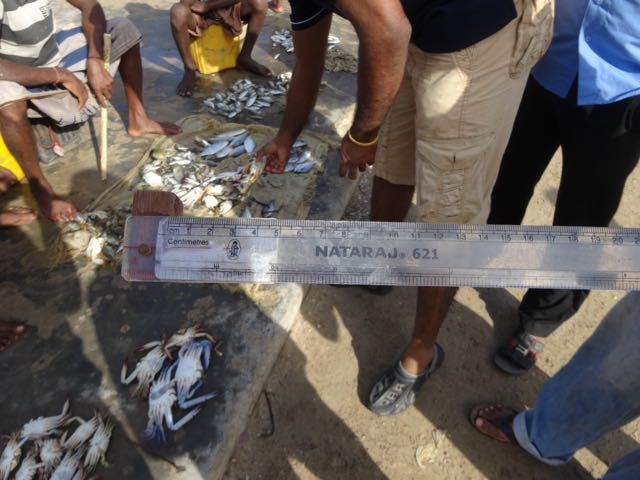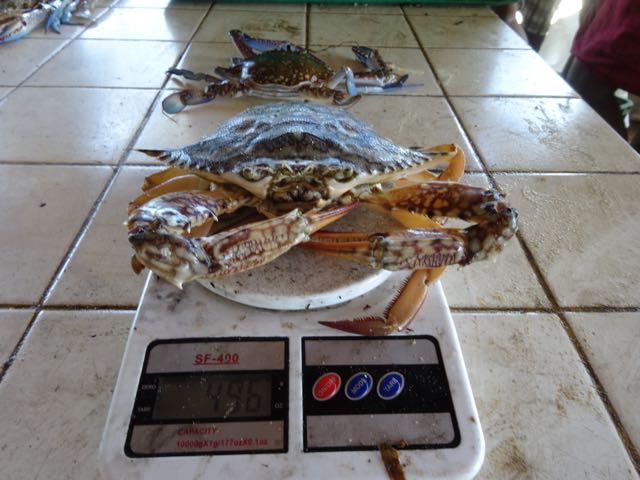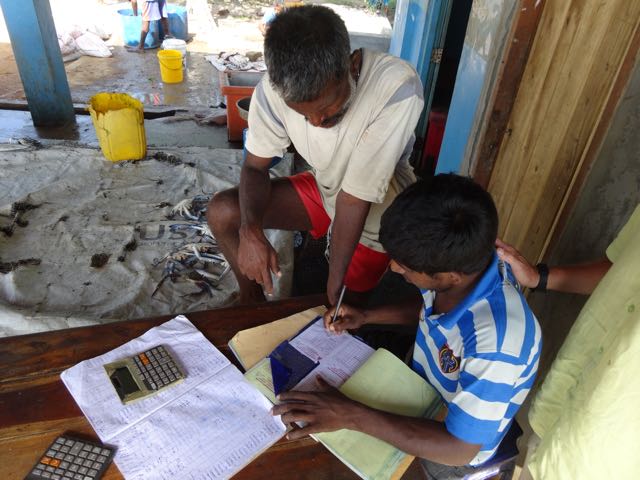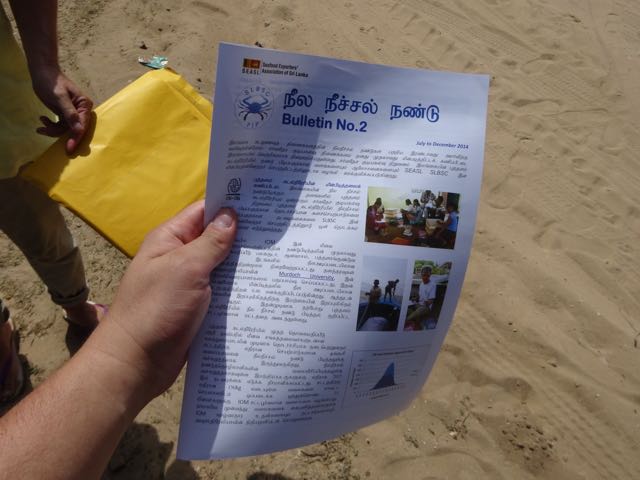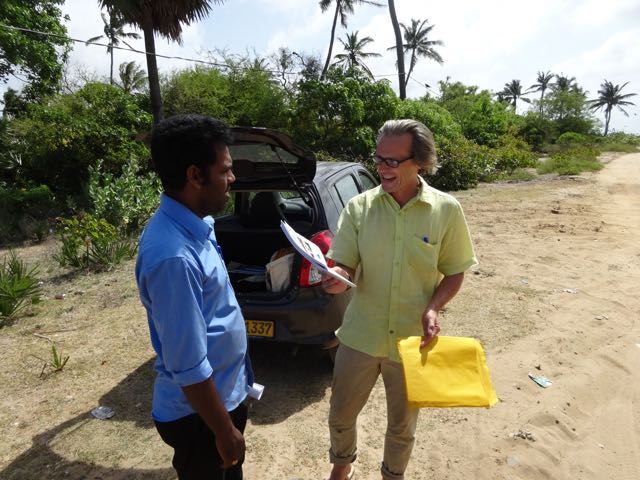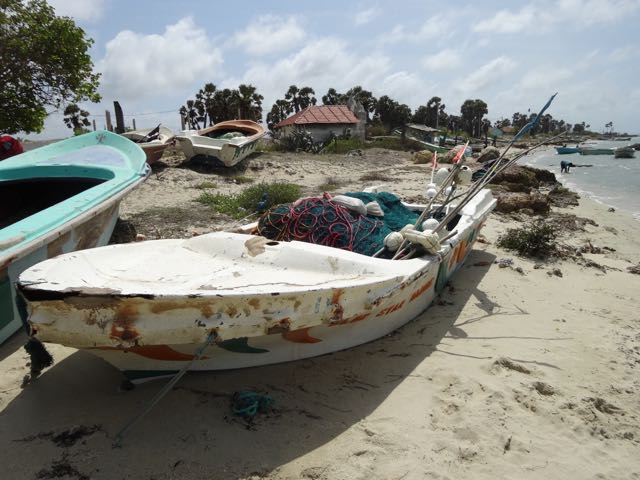Sri Lanka has had their fair share of tough times, a bloody 26-year civil war that ended in 2009, and a disastrous tsunami in 2004. Events that decimated many communities, and left survivors to try and pick-up the pieces as best they could. Needless to say this enabled a floodgate of UN and bilateral aid programs to help foster a new era of reconciliation, rehabilitation, and development. A by-product of these programs has been none other than Sri Lankan FIP Director, Dr. Steven Creech. To our benefit, Steve brings his experience and expertise working in with conflict affected and tsunami affected communities, and community development to lead the BSC FIP effort as the sustainability director for the Seafood Exporters’ Association of Sri Lanka (SEASL).
Married to a Sri Lankan and undoubtedly tied to the land, Steve has made Sri Lanka his home for almost twenty years. He takes the contentious issues that face the country to heart, and works tirelessly to address sustainability in BSC fisheries and the challenges that face coastal communities. None more so than the much disputed Indian trawlers that illegally fish in Sri Lanka’s exclusive economic zone. With support from the local Fishermen’s Cooperative Societies, the FIP has helped to give these communities a voice by enabling a dialogue with the Foreign Ministry, the Ministry of Fisheries, and other high-level government officials about how Indian trawlers negatively impact their livelihoods. Steve has written several features to a number of local newspapers on the issue:
The initial launch of the FIP was in 2013, with support from the NFI Crab Council and Timothy O’Reilly, of Taprobane Seafoods (TSF). Much of the development of the Sri Lankan BSC FIP must be credited to TSF and Tim, by being able to rally local suppliers, their supply-chains, and industry organizations such as SEASL to support the sustainability cause. Striving towards sustainability is now pillar of the Taprobane’s identity.
Through the direction of Steve and support from SEASL and TSF, the FIP was able to complete a Gap Analysis based on the MSC Standard, which focused a lot of energy towards on-the-ground fishery and community outreach. This is in contrast to a typical MSC Pre-Assessments or Gap Analysis that often are conducted by a consultant whom is flown in from overseas, and take only a few days of stakeholder meetings in conference rooms to derive information about the fishery. The Sri Lankan blue swimmer crab FIP completed other FIP reporting documents such as a Scoping Document and a FIP Action Plan that’s benchmarked to the MSC, and outlines a suite of fairly straightforward tasks to address fishery challenges and improve the fishery.
Every quarter Steve and SEASL will develop a newsletter that is printed and distributed widely across fisher communities, universities, and government organizations. The newsletters especially help keep local fisher communities up to date with what’s going on in the fishery, where internet access is unavailable. The newsletters are effective because the literacy rate in fishing communities is above 98%. The newsletters are written in English and translated into Sinhalese and Tamil, the two languages of Sri Lanka. A similar challenge that is no-doubt faced during stakeholder roundtables, where 3 translations are often needed.
In early 2014 Steve was able to reach-out to Dr. Jeremy Prince and learn more about Length-Based Spawning Potential Ratio (LB-SPR), a grass-roots biological approach to conduct fishery stock assessments. Stock assessments are typically a big challenge for BSC FIPs as they are time and labor intensive; require technical expertise to conduct and understand the results, and lots of capacity both to implement and act upon for fisher management. Needless to say conventional stock assessment methodologies are also very expensive compared to the available funding to conduct this activity. Depending on the assessment method, the government may not even have the infrastructure or management capacity to actually act upon what the data implies. To date Dr. Steve, with additional support from UN-IOM and UN-ILO, have been able to conduct four fishery stock assessments in the Gulf of Mannar (1) and the Bay of Bengal (3). Both bodies of water represent the fisheries’ geography. Interim results from these non-conventional LB-SPR assessments on the status of BSC stocks have been quite positive, 46% SPR in Mannar, and 31% SPR in the Bay of Bengal. A typical target reference point for BSC species is 30% SPR, this is where the fishery is deemed biologically sustainable. In August Dr. Jeremy Prince and Adrian Hordyck, of Murdoch University will visit Sri Lanka to discuss application of the data and possible management interventions with fishery managers at the department of fisheries. At the same time SEASL is working with the National Aquatic Resources Research and Development Agency (NARA), the national institute for conducting fishery management research, to conduct baseline biology survey that will feed into the SPR assessment, and help cross-reference some of that information.
After an MSC training workshop conducted in early 2015, by Cassie Leisk of MSC’s Developing World Program, it was apparent other research was required to address all MSC criteria’s. Steve, blanket emailed universities across Sri Lanka, asking them to help with data collection to assess impacts the fishery has on non target species i.e., retained, discarded and ETP by-catch. As a result, two universities and four final year students signed-up to work with the FIP. Universities students get much sought after field experience, and their assessments will contribute towards real fishery management application. In exchange, the FIP gets the much sought after scientific data that is needed to verify the ecological impacts of the fishery. Currently three students from Uva Wellasa University are working with fishers and their families to collect data to survey non-target species, BSC fecundity and the impact of Indian trawlers on BSC fishers. Students will collect data for a term of 3-months and then write a report. The report will go towards course credit, and will be vetted to other fishery managers for review as well. The MSC workshop also inspired a new course at The Ocean University of Sri Lanka, “International Ecolabeling and Sustinability Standards” as part of their fisheries curriculum.
Looking ahead, Steve and Tim have also been in contact with the principal scientists at Monterey Bay Aquarium’s Seafood Watch. Seafood Watch regularly rate the sustainability of seafood across North America using a stop light system: Red for Avoid, Yellow for Good Alternative, and Green for Best Choice. In light of the promising SPR assessments, and the other data that’s being collected by the FIP, there is a good chance that Sri Lanka could warrant a Seafood Watch, “Yellow” within the next 12 to 18 months. This would catapult the image and value of Sri Lankan blue swimmer crab, with market preference, and potential premiums. Seafood Watch’s standard is compliant with the MSC, but is a stricter on ecosystem and by-catch impacts of a fishery. Tim and Steve feel that, “…going for a Seafood Watch rating makes more sense…” especially for a North American centric consumer base – Taprobane’s main market through Chicken of the Sea Frozen Foods. Seafood Watch currently is more widely recognized than MSC in North American.
Looking beyond ‘biological and ecological sustainability’, the FIP is also addressing social and community development in coastal fisher communities. To this end the SL BSC FIP has been able to work in partnership with UN-ILO’s “Local Empowerment through Economic Development”, LEED Project. LEED’s objectives are to promote economic empowerment and decent employment with conflict affected communities in the Northern districts of the country. Through a small-grant to the FIP and to fishing communities the FIP has been able to collect baseline data for fishery management such as SPR and crab net selectivity, as well as help enhance Fishermen’s Cooperative Societies to operate much more like a self-sustaining business unit. Fishermen’s Cooperative Societies were established in Sri Lanka in the early ‘70s, however rarely does a cooperative dedicate funds to social welfare and community development. Several cooperative manage small funds generated by taking a small portion of fishers’ catches, which are then used to contribute to community development, and/or offer a fair line of credit to fishers that may need support for things like weddings or funerals. That way fishers aren’t continuously in a cycle of indebtedness by middlemen. Tim and Taprobane Seafoods have also contributed to community development by opening primary processing units in the North that provide much needed jobs and investments to war-recovering areas.
We could say that the Sri Lankan Blue Swimmer Crab FIP is tackling sustainability on all fronts. The FIP has generated goodwill and willingness from fisher communities and the public sector to engage in the effort, and commitment from the private sector, through SEASL, to improve the fishery towards achieving a sustainably managed fishery. Tim and Steve have been the Champions behind the initiative, their tireless efforts contribute to the progress that the FIP has made in a little over two years. Other BSC FIPs in the region could take a note or two of what is happening in Sri Lanka, for examples of approaches and initiatives that help to improve a BSC fishery.
- Dr. Steve on the coast of the Gulf of Mannar
- Uva Wellasa University Students collecting by-catch data
- Ingenious way to make a caliper!
- There’s monster crab from Sri Lanka
- Great mustache!
- Enumerator at a Fisherman Cooperative Society
- One size does not fit all, a 10cm crab compared to a 18cm crab.
- Newsletter translated into Sinhalese and Tamil
- Dr. Steve distributing Newsletters
